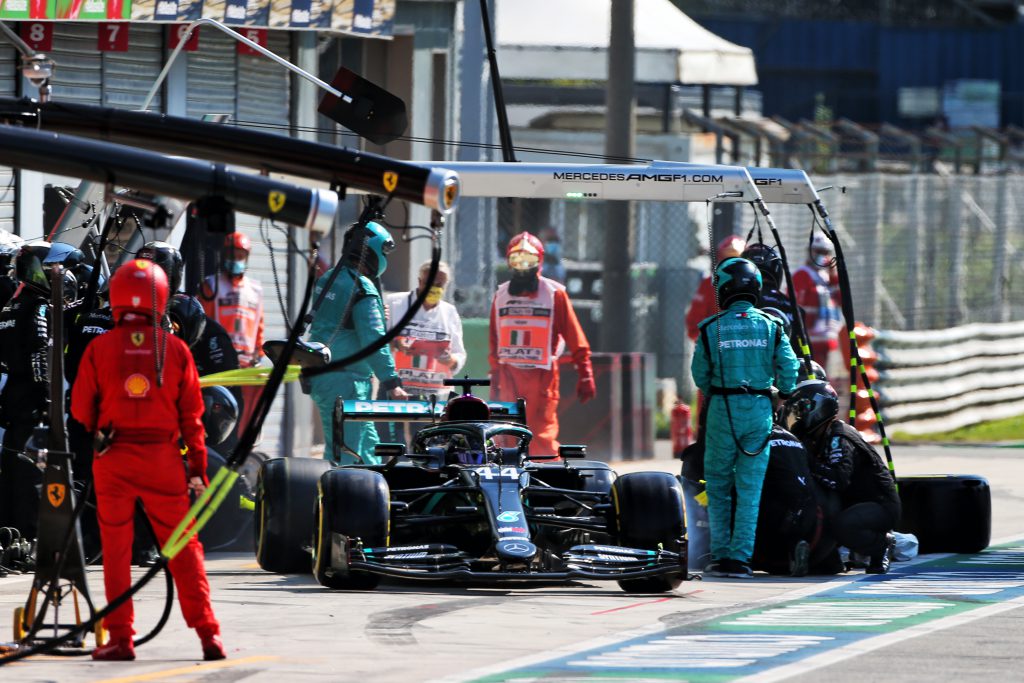Up Next

Formula 1 race director Michael Masi has clarified four points of contention over the closed pitlane that caught out Lewis Hamilton and Mercedes and transformed the Italian Grand Prix.
A safety car was deployed on lap 20 at Monza after Kevin Magnussen’s Haas came to a halt on the exit of the Parabolica, and the pitlane was closed as the recovery of the car required it to be pushed into the pits instead of removed trackside.
The pitlane was closed at 15:41:47, according to the FIA, with Hamilton entering the pits 12 seconds later. Hamilton – along with Antonio Giovinazzi – was handed a 10-second stop-and-go penalty for the infringement, which cost him a certain victory.
Was sufficient notice given?
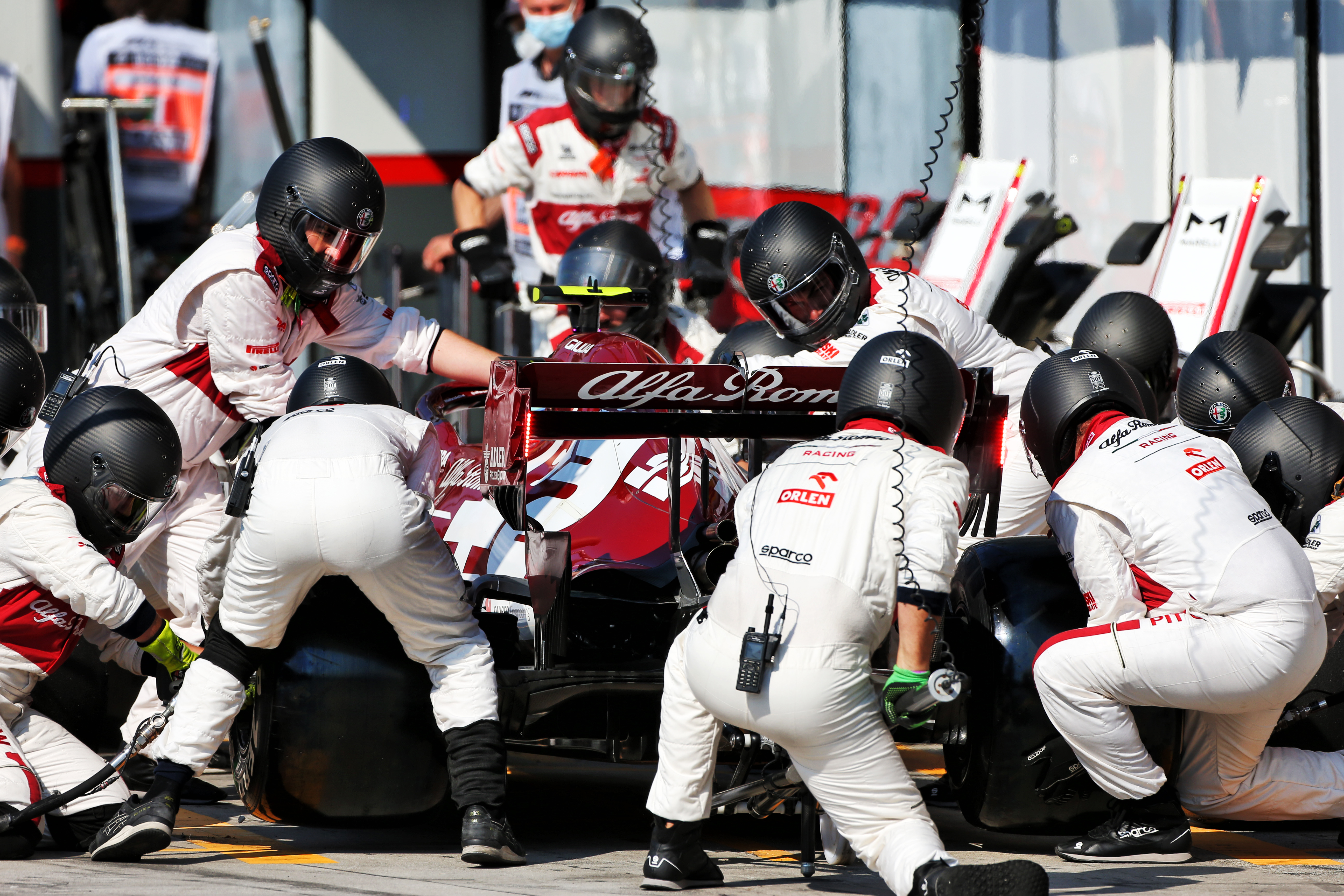 Mercedes team boss Toto Wolff said after the race that the pitlane being closed went unnoticed by the team because it was preparing for Hamilton’s pitstop and the focus was not on the timing screens – it was only when a UK-based strategist saw the message that they realised, and it was too late.
Mercedes team boss Toto Wolff said after the race that the pitlane being closed went unnoticed by the team because it was preparing for Hamilton’s pitstop and the focus was not on the timing screens – it was only when a UK-based strategist saw the message that they realised, and it was too late.
But Masi, who was not responding directly to Mercedes’ comments but explaining his decisions independently, says there are multiple parts to the signal used for the closure of the pitlane.
“One is for the driver, the light panels have a big red X on it. Depending on the circuit, there are either two panels or one panel.
“At this circuit we have two panels [on the outside mid-corner and at the exit of Parabolica] that display that cross to signify the pitlane is closed from a trackside perspective.
“Additionally, the software that the teams use has the pitlane shown as red with pitlane closed.
“The third element to that is on the timing page that has all the incident notifications pop up. That says ‘pitlane closed’ on page three.”
How are the drivers meant to tell?
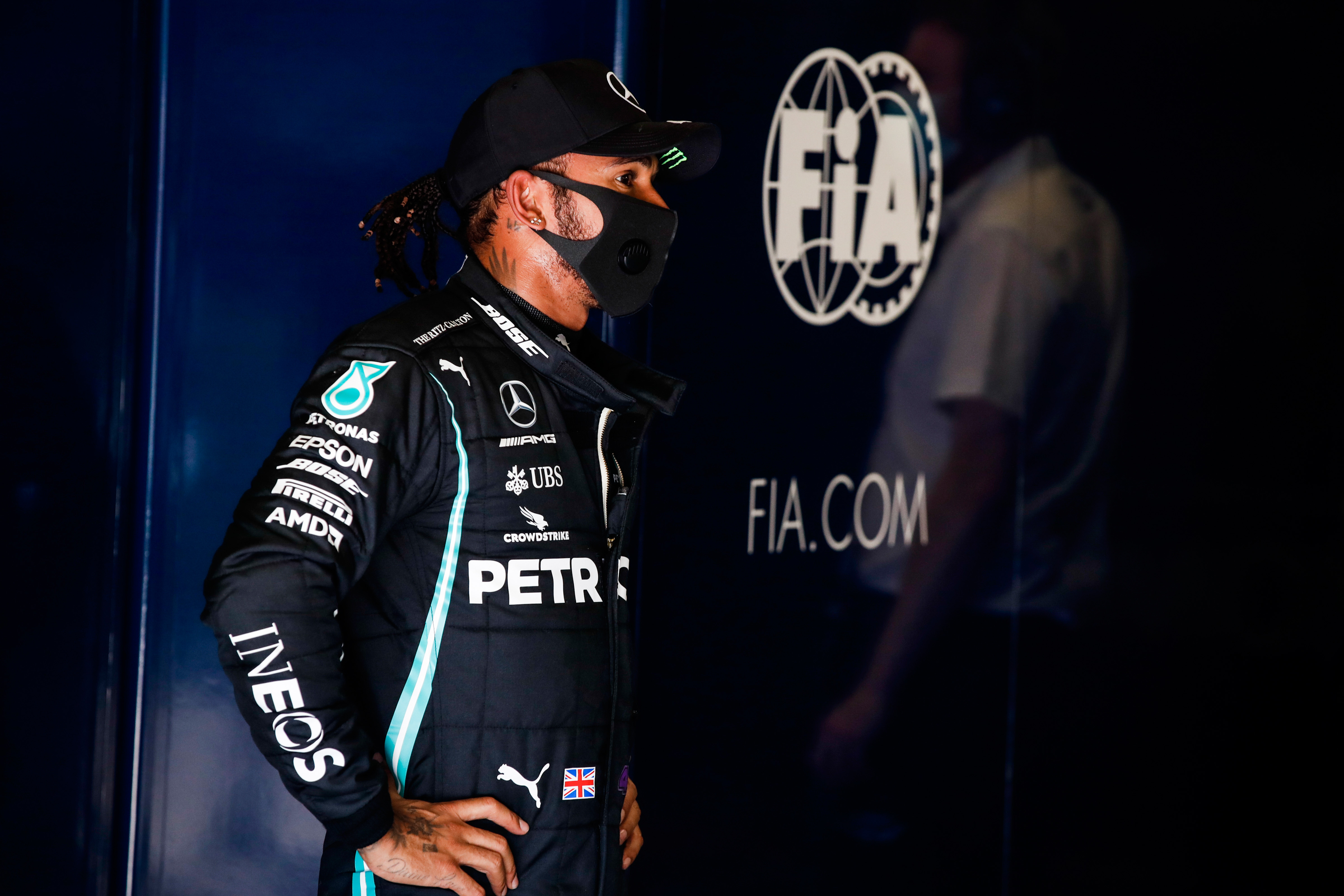 Hamilton said he had not seen the light panels on the outside of Parabolica denoting the pitlane was closed because he was focusing through the corner and to the right. There is no pitlane light at Monza so he had no notification at the entry either.
Hamilton said he had not seen the light panels on the outside of Parabolica denoting the pitlane was closed because he was focusing through the corner and to the right. There is no pitlane light at Monza so he had no notification at the entry either.
He said that such light panels are easy to see on the approach to a corner but he was looking right for the corner and then for the marshals/the car recovery on the right-hand side.
Both he and team-mate Valtteri Bottas also seemed unaware the light panels had that function, presumably because a pitlane closure is such a rarity.
Hamilton said he couldn’t “remember actually any time coming here that that was the indication for the pitlane – I’ve never known that would be the left”, while Bottas cited how “uncommon” it is that the sign is used and added “it was not that clear what the sign meant”.
But Masi’s pre-weekend event notes contain specific notes relating to the track light panels “displaying pit entry status”, including: “The light panel indicated on the pitlane map will display a flashing red cross if the pit lane is closed at any point during the race.”
These pit entry status panels are marked on a map within the document.
“The map detailing those is distributed to all the teams in my event notes and is part of the pitlane diagram,” said Masi.
“It is also what forms part of the race director event notes which is used for the driver’s meeting.”
When asked if that signal was the same at all tracks, Masi replied: “It’s identical.”
Did the pitlane even need to be closed?
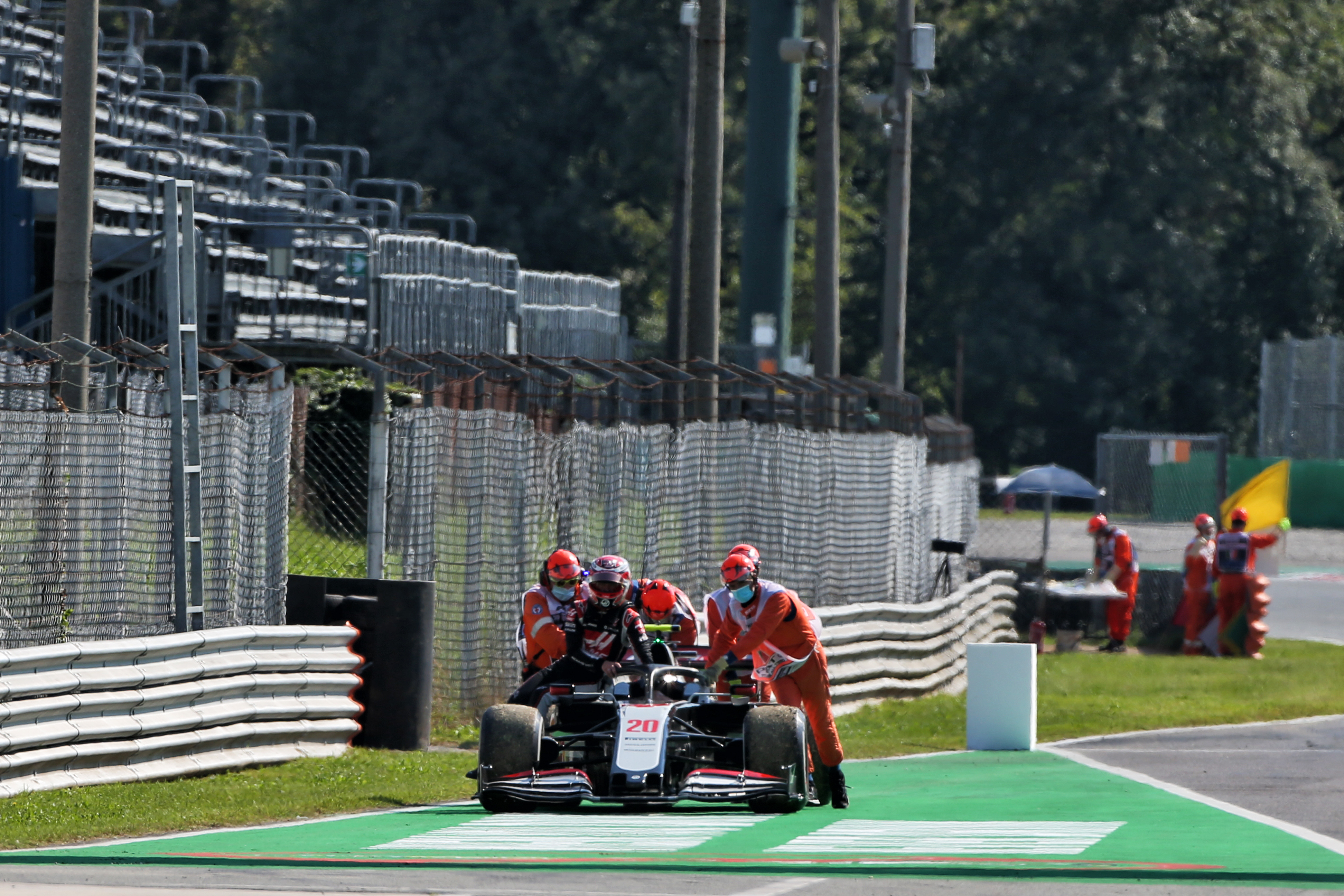 The entire process would have been avoided if Magnussen’s car had been removed trackside rather than pushed into the pitlane.
The entire process would have been avoided if Magnussen’s car had been removed trackside rather than pushed into the pitlane.
Wolff and Hamilton both seemed unsure of the reasoning behind that decision from race control, with Hamilton in particular suggesting the car could have just been pushed behind the barrier.
Masi said it was not actually possible to clear the Haas any other way.
“There’s actually not a gap in the fence there,” he said. “As the drivers and teams are all made aware, some of the openings are vehicle openings, some of them are just marshall posts.
“The ones that have the shorter orange band effectively are actually only a marshall post and the car could not fit in that area.
“So the only safe place to remove that was to push it down into the pitlane because there was no other opening available.”
Was the penalty too severe?
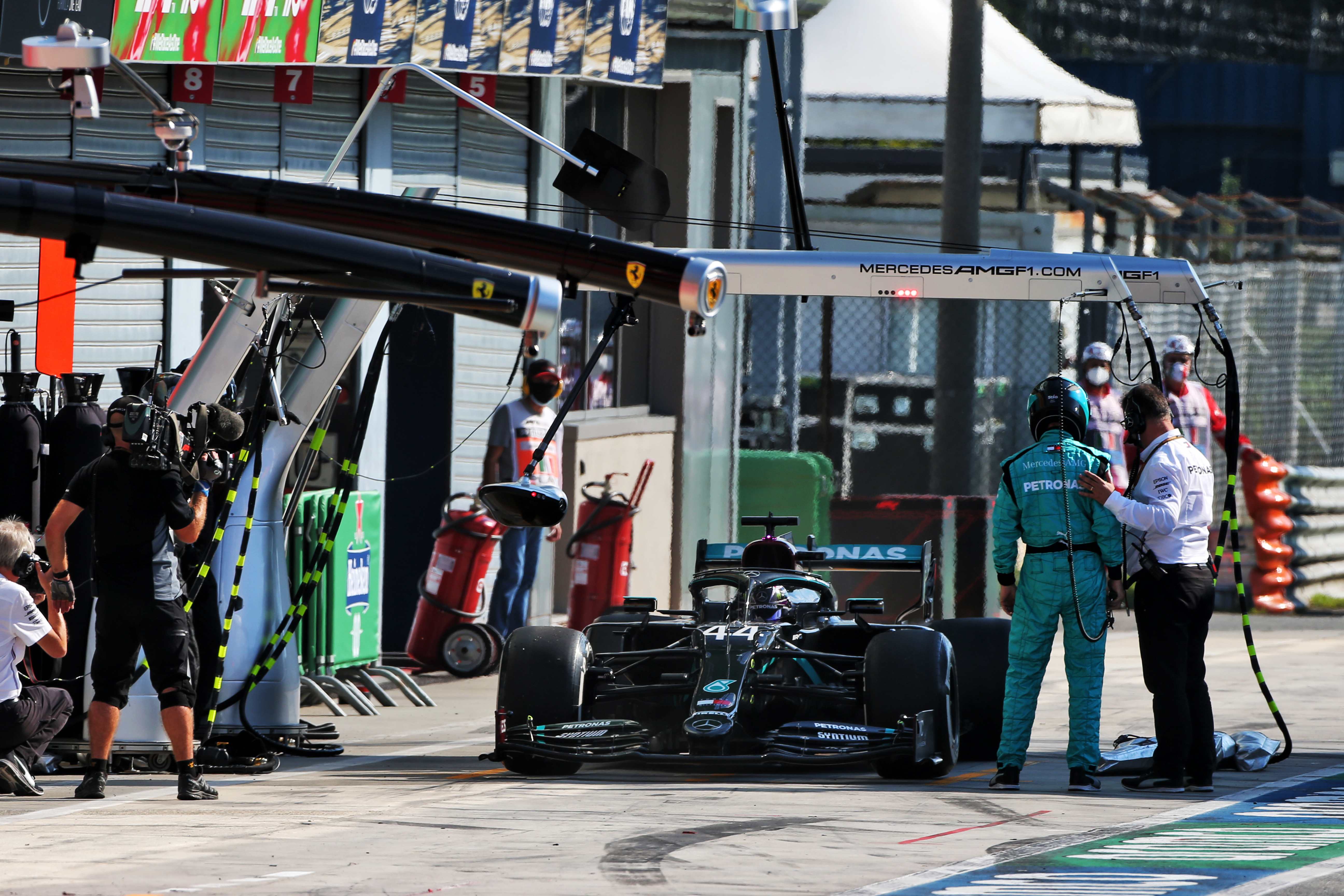 One final contention was over the severity of the penalty, which left Hamilton 20 seconds off the pack.
One final contention was over the severity of the penalty, which left Hamilton 20 seconds off the pack.
Hamilton said he accepted it and understood why it might be necessary because otherwise drivers could just bank a free stop – but did raise the prospect of it being reviewed in the future.
“Naturally it feels severe,” he said. “I think a stop-and-go penalty often I would imagine would come if you’ve done something intentional.
“If you’re driving dramatically and you put someone in danger, maybe. I don’t know if they can refine it and make it better for the future.”
Some have drawn comparisons to the 2016 Brazilian Grand Prix, when Daniel Ricciardo only received a five-second time penalty for entering a closed pitlane.
But the sporting regulations were different in 2016 and did not outline a specific penalty, so the stewards could assess it on its own merits – in that instance, they took into consideration the limited visibility in the rain-hit race and short amount of time available to react to the pitlane being closed.
However, for Hamilton the penalty was locked in early on because the FIA’s current sporting regulations offer no flexibility and simply demand a 10-second stop-and-go for entering a closed pitlane.
“The simple part is that there is no flexibility within that,” said Masi. “The stewards have a mandatory penalty that they must apply.”
Changing that rule would require a discussion that Masi says the FIA is always open to.
“If there are elements of the regulations that need to be reviewed, we will review it in a sporting working group with all of the teams sporting directors,” he has always said.
“And if something is necessary, go through the required process to do it.”


